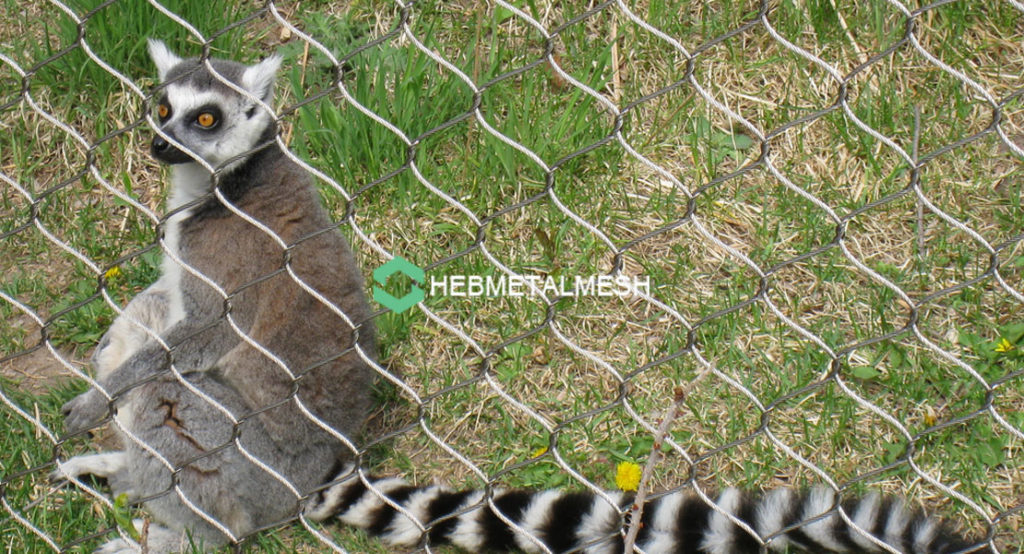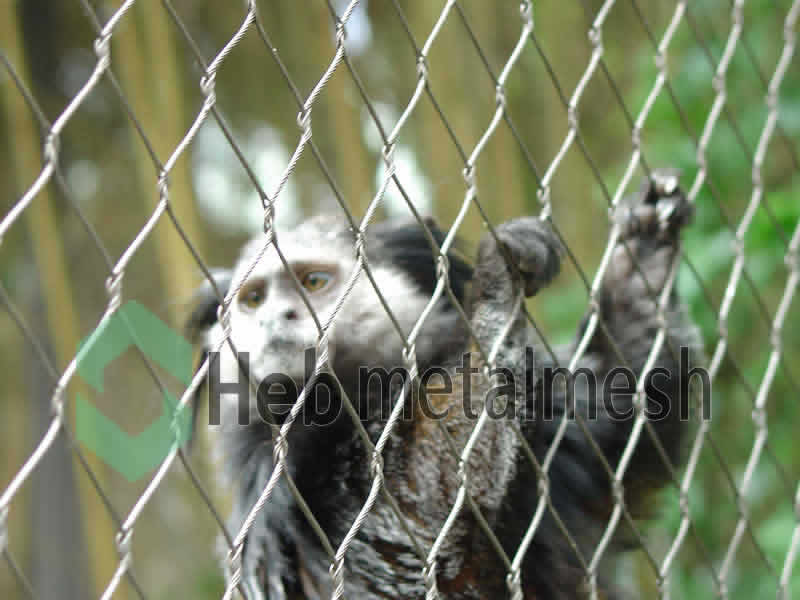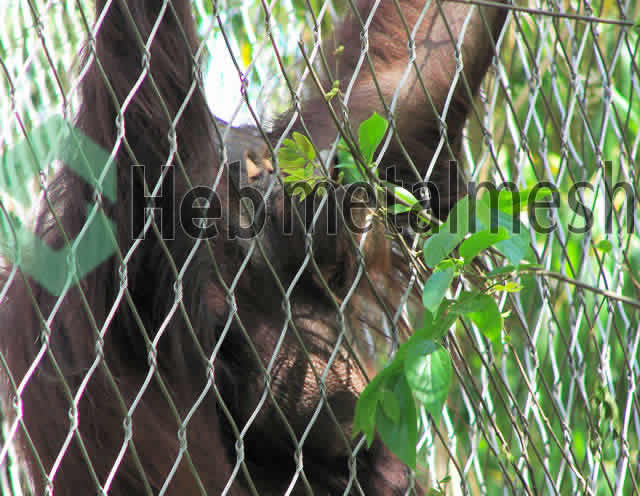Introduction to Small Animal Fencing
Creating a safe and secure environment for small animals is of paramount importance for any pet owner. Small animal fencing plays a crucial role in ensuring that these cherished pets remain protected from potential threats and hazards. A well-constructed fence not only serves as a barrier against predators but also prevents small animals from escaping into unsafe surroundings. The emotional well-being of both the animal and the owner is greatly enhanced when there is peace of mind regarding safety and security.
One of the primary motivations for building a small animal fence is the protection it offers from various predators. Animals such as foxes, raccoons, and birds of prey can pose significant dangers to small pets. By establishing a robust enclosure, pet owners can mitigate these risks, allowing small animals to enjoy their surroundings while minimizing the likelihood of harm. Choosing the right materials for fencing mesh netting is essential in ensuring that the fence not only deters intruders but also withstands the challenges posed by the outdoor environment.
Furthermore, a small animal fence effectively prevents escapes, which can lead to dire consequences for pets who wander beyond the safety of their enclosure. Small animals are often curious and adventurous, making it imperative that their living space is adequately secured. A well-designed fence provides an outlet for exploration while containing the animal within a safe area, fostering both physical activity and mental stimulation.
In conclusion, building a small animal fence is not merely a practical undertaking but is deeply intertwined with the emotional aspects of pet ownership. Ensuring the safety of small animals is a fundamental priority for pet owners, embedding a sense of responsibility and care. Ultimately, investing time and resources into creating a secure and safe enclosure not only benefits the pets themselves but also enhances the overall quality of life for both animals and their owners.
Choosing the Right Fencing Material
When it comes to building a secure enclosure for small animals, selecting the appropriate fencing material is crucial. The right choice not only ensures the safety of the animals but also extends the lifespan of the fence itself. Various materials are available on the market today, each with their own set of characteristics that cater to different needs. Common options include wood, vinyl, chain link, and wire mesh, with variations designed specifically for small animal fences.
Wooden fences, while aesthetically pleasing, may not provide the durability required for long-term use, particularly when exposed to moisture and harsh weather conditions. Over time, wood can warp or rot, leading to potential breaches in the fence. Vinyl, on the other hand, offers low maintenance and enhanced weather resistance but may not provide the security needed against determined small animals who can chew through materials.
Chain link fencing is another popular choice; however, its rigidity can make it less effective for small animal enclosures, as it does not prevent smaller creatures from escaping. Wire mesh, particularly handwoven stainless steel mesh, stands out as an exceptional option. This material offers significant advantages; its corrosion resistance ensures longevity, while its strength prevents tampering and escape attempts by even the most agile animals. Handwoven stainless steel mesh is designed to conform to the specifications required for various animal types, providing a robust barrier without the risk of sharp edges. Additionally, it is relatively easy to install, making it a practical choice for both novice and experienced constructors.
In conclusion, assessing the needs of your small animals and the characteristics of available materials is essential when choosing the right fencing. Handwoven stainless steel mesh emerges as a highly recommended choice due to its durability and safety features, offering peace of mind for those looking to create secure enclosures.
Why Stainless Steel Mesh is Ideal for Small Animal Fences
When it comes to establishing a secure environment for small animals, choosing the right fencing material is paramount. One of the standout options in the market is the 1.5″ x 1.5″ x 1/16″ handwoven stainless steel mesh (HM1238). This specific type of mesh offers an array of benefits that make it particularly suitable for small animal fences. Its construction ensures durability, preventing any potential breaches caused by weather wear or physical damage.
The lightweight nature of stainless steel mesh allows for easy installation and handling, making it accessible for both DIY enthusiasts and professionals alike. This aspect is important as it enables the seamless construction of enclosures that can effectively safeguard small pets in various settings, from backyards to farms. Moreover, the robust qualities of stainless steel ensure that the fence will maintain its structural integrity over time, reducing the need for frequent repairs or replacements.
Another critical feature to consider when selecting small animal fencing is the mesh size. The specific dimensions of 1.5 inches by 1.5 inches are optimal for deterring small animals from escaping while simultaneously preventing larger predators from accessing them. This balance is vital as it fosters a sense of safety for the animals, allowing them to roam with reduced risk. A smaller mesh size especially minimizes the chances of young or particularly agile animals slipping through or being caught by external threats.
In essence, the combination of durability, lightweight design, and appropriate mesh size makes stainless steel mesh fencing an effective choice for anyone aiming to create a secure habitat for their small animals. Its adaptability and strength ensure that it not only serves as a barrier but also enhances overall peace of mind for caretakers.
Customizing Your Fencing Roll
When constructing a small animal fence, one of the most effective ways to ensure that the enclosure meets specific needs is by customizing the fencing roll. Customized lengths provide the added benefit of saving installation time, as they eliminate unnecessary cutting and adjustments on-site. This precision allows for a seamless approach to fencing, ensuring that the material fits perfectly within the given layout, whether it be a rectangular yard or a more intricate design.
An important advantage of tailoring your fencing roll is that it optimizes the use of materials. Standard rolls may not suit unique enclosures, often leaving excess material that can lead to waste and increased costs. By opting for customized sizes, you can make efficient use of both your time and resources, which is particularly beneficial for larger areas or irregularly shaped spaces. This efficiency becomes crucial when budgeting for projects that involve multiple fencing sections.
Another critical consideration is the aesthetic aspect of your small animal fence. Many manufacturers offer the option to select from various colors, such as natural and black oxide shades, allowing you to choose a finish that aligns with your taste and landscaping. The ability to match your fencing not only enhances the visual appeal of your enclosure but also helps it blend seamlessly with surrounding structures and natural elements. This integration can create a more harmonious environment, which is especially relevant in residential settings.
In summary, customizing your fencing roll not only enables a precise fit for your small animal fence but also contributes to a visually pleasing design. With options for length and color, you can ensure that your fencing solution is both functional and aesthetically appealing, catering effectively to the needs of your enclosure.
Planning Your Small Animal Enclosure
Building a small animal fence begins with careful planning, ensuring that the enclosure fulfills the needs of the animals while remaining practical for the owner. Start by selecting a suitable location that provides ample space and accessibility. Factors such as proximity to the house, sunlight availability, and potential disturbances from other animals should be considered. Ideally, the site should be flat to facilitate drainage and create a safe environment free from stagnant water which can attract pests.
Next, determining the size of the enclosure is crucial. The dimensions will depend on the type and number of animals you plan to house. For instance, rabbits and guinea pigs require ample room to burrow and roam, while chickens need space to peck and scratch. It is beneficial to research the recommended space allowances for each species, ensuring that the small animal fence provides enough room for the animals to thrive comfortably. A well-thought-out layout can also minimize stress and territorial disputes among animals.
Furthermore, an effective small animal enclosure needs to take drainage and sunlight into account. Proper drainage systems will prevent water from pooling near the habitat, fostering a dry and healthy living environment. On the other hand, exposure to natural sunlight is vital for the animals’ well-being; thus, ensure that a portion of the enclosure is exposed to sunlight for significant parts of the day, while also providing shaded areas for respite from harsh sun conditions.
Finally, researching local zoning regulations or obtaining necessary permits is fundamental before construction begins. Guidelines may vary depending on your location, and failure to adhere to them can lead to legal penalties or required removal of the structure. By addressing these planning factors comprehensively, the project of building a small animal fence will yield a secure and beneficial habitat for the animals and a rewarding experience for the caretaker.
Installation Tips for Your Small Animal Fence
Installing a small animal fence requires careful preparation and the right tools to ensure it serves its purpose effectively. To begin with, gather the necessary tools, including a post hole digger, hammer, level, measuring tape, and wire cutters, along with the fencing mesh you’ve selected. It is essential to check your local regulations regarding fence height and materials to avoid any compliance issues.
Start by marking the perimeter where the fence will be installed. Use the measuring tape to assure accuracy and ensure that the corners and gate openings are appropriately designated. Once marked, use the post hole digger to create holes for the fence posts, digging to a depth of about two feet to provide stability. For added strength, consider setting the posts in concrete.
Next, place the posts in the holes, ensuring they are vertically aligned using a level. This is crucial for achieving a professional finish. After securing the posts, it is time to attach the small animal fence mesh. Unroll the netting and pull it taut along the posts, fastening it with the appropriate clips or staples. Be mindful of ensuring that the mesh is anchored securely and does not sag or create gaps that could allow small animals to escape or predators to gain access.
A common pitfall during installation is failing to account for terrain features, which can affect fence tensioning. Ensure that the mesh is level across varying ground types and adjust as necessary. Additionally, be cautious of sharp edges on the mesh that can pose a hazard to both animals and humans. Regularly inspect your small animal fence after installation to make adjustments as needed and maintain its integrity over time. By following these installation tips, you can establish a reliable barrier that prioritizes the safety and security of your small animals.
Maintaining Your Small Animal Fence
Proper maintenance of your small animal fence is crucial to ensure its longevity and effectiveness in protecting your pets and keeping them safe from potential threats. Regular inspections should be conducted to identify any signs of wear and tear. Look for holes, rust, or loose sections in the fencing material. Addressing these minor issues promptly can prevent further deterioration and save you from costly repairs in the future.
For stainless steel mesh, which is a popular choice for small animal fencing due to its durability, it is essential to implement appropriate cleaning methods. Over time, dirt, debris, and organic matter can accumulate on the surface, potentially leading to corrosion. Use a soft brush and mild soap solution to gently clean the stainless steel mesh. Avoid abrasive scrubbers or harsh chemicals, as these can scratch the surface and compromise its integrity. Rinsing thoroughly with water ensures that no residue remains, maintaining the fence’s appearance and functionality.
If you notice any damaged sections of your fence, it is important to attend to repairs immediately. For smaller holes in the mesh, consider using a patch of the same material, secured in place with wire or other fasteners designed for fencing. If a larger section is compromised, it may be necessary to replace that part of the fence entirely. Ensure any repairs blend seamlessly with the existing structure to maintain a cohesive look and effectiveness. By combining regular inspections, proper cleaning practices, and timely repairs, you can help extend the lifespan of your small animal fence, ensuring a safe environment for your pets and a sound investment for your property.
The Impact of a Safe Enclosure on Animal Health
Creating a secure enclosure through the use of a small animal fence is vital for promoting the overall health and well-being of small animals. When animals are contained within a safe perimeter, they experience reduced levels of stress. An environment that is predictable and free from external threats allows animals to feel secure, leading to lower anxiety levels. This is particularly important for creatures that are naturally preyed upon, as the anxiety of potential dangers can have detrimental effects on their physical and psychological health.
A safe enclosure significantly contributes to improved social behaviors among small animals. For example, animals that feel secure in their environment are more likely to engage with their peers, display appropriate social interactions, and explore their surroundings. Interaction, whether with humans or other animals, is vital for the psychological stimulation and mental health of pets. In contrast, an unsecured environment may lead to erratic behavior, excessive hiding, or even aggression stemming from fear of external threats.
Moreover, a well-designed fencing system helps prevent injuries that can occur when small animals roam unsupervised. When little pets are allowed to wander freely, they face risks from predators, vehicles, and various hazards present in the environment. A small animal fence acts as a protective barrier, shielding them from such dangers. By creating a controlled space, pet owners can monitor their animals’ activities while ensuring that all necessary precautions are taken to prevent injuries. This vigilance not only safeguards their physical health but also contributes to a longer and happier life for the animals.
In conclusion, the implementation of a secure small animal fence plays a crucial role in enhancing the health and quality of life for small pets. By fostering an environment that mitigates stress, encourages social interaction, and prevents injuries, pet owners can significantly improve their animals’ overall well-being.
Conclusion and Next Steps
As we reach the end of this comprehensive guide on building the perfect small animal fence, it is essential to reflect on the critical measures discussed throughout the article. Establishing a reliable enclosure for your small animals not only ensures their safety but also enhances their well-being. The choice of materials, particularly stainless steel mesh netting, plays a crucial role in creating a secure environment that can withstand the elements and resist intrusions from predators.
Throughout this blog post, we emphasized the importance of selecting the appropriate fencing mesh for your needs. The benefits of using such a high-quality product cannot be overstated, as it provides durability and peace of mind. Investing in a small animal fence constructed from long-lasting materials will ultimately lead to fewer worries about the integrity of your enclosure. Additionally, integrating features like buried fencing and reinforced edges will add an extra layer of protection for your small animals.
With the information provided, we encourage you to take action and begin planning your small animal enclosure. Before purchasing your fencing materials, consider reevaluating the space you have available and the specific requirements of the animals you intend to house. Understanding local regulations regarding fencing can also help streamline your building process.
If you are looking for more resources, we recommend visiting local hardware stores and specialty suppliers that carry stainless steel mesh fencing products. Many online platforms also offer a wide range of fencing options tailored to various needs, so explore these venues for the best choices available. Remember, every effort you make in constructing a secure small animal fence will ultimately contribute to a safe and happy environment for your pets.


